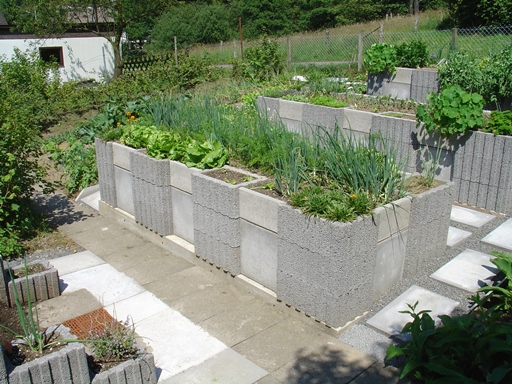
Especially if your soil is poor, building raised beds is a terrific method to increase the amount of growing space in your garden. Building them may be completed in a weekend if you prepare ahead of time, and you can start producing fruit, vegetables, cut flowers, and even miniature trees and bushes right away. Let’s see how to make or build a raised garden bed
A comprehensive tutorial on building a raised bed using a timber frame
Excavate a small trench:
Using canes and thread mark out the contour of the bed. Then, dig a small trench that is precisely the right width to fit the timbers.
Place the first timber layer in place:
Using a spirit level, ensure that all of the timbers are horizontally aligned as you lay them into the trench. Examine the levels both along the length of the timbers and diagonally between them.
Glue the wood pieces together:
Drill a hole in the top and bottom of the end timber at every corner of the sleeper to accept a few long, strong coach screws. After that, firmly screw the timbers together.
Insert the second stratum.
Place the timbers in the desired layer, making sure they overlap the joints below to add strength to the structure. Just like before, screw it into place. If needed, continue until the bed reaches the desired height. To keep layers together when utilizing many layers, insert vertical batons into each corner.
Get the bed’s foundation ready.
Any turf at the foot of shallow beds should be lifted and removed, and the soil should be gently worked free with a fork. Remove any turf and topsoil from beds deeper than 50 cm (20 in). Replace with subsoil or rubble to guarantee proper drainage and lessen the amount of high-quality soil required to fill the bed. Lastly, place the turves in the base upside down so they can decompose and improve the soil.
Complete the bed:
A standard potting combination consisting of three parts organic matter (such as well-rotted manure, leafmould, or garden compost), two parts
Sharp sand is not the same as builders’ sharp sand; sharp sand is cleaned, and gritty sand is sold for gardening and used in potting compost mixes.
For most raised beds, one part of sharp sand and seven parts of topsoil is sufficient. Double the sand content for alpines, bulbs, and herbs that require adequate drainage. Add any topsoil that has been taken out of the base for deep beds.
Go from the bed to relax:
Load the bed till it is about 5 cm (2 in) below the edge. Level the soil again if needed after pressing it down and letting it settle for a few weeks. At that point, you can begin planting or sowing.
How to begin building raised beds:
There are a few things to think about before building a raised garden bed ideas:
Aspect and orientation:
Raised bed vegetable garden layout designed mostly for fruits, vegetables, and cut flowers require full light, place beds in your garden facing south or west, away from overhanging trees that may cast shadows. For even levels of sunshine, run long beds from north to south.
Size:
Choose several smaller beds instead of a lengthy row of larger ones as they can be more manageable. Less than 1.5 meters (5 feet) in width should make it simple to get to the center without having to stand on the ground.
Depth:
Although most plants, particularly fruit bushes, shrubs, and small trees, require 45 cm (18 in) or more, 30 cm (1 ft) is sufficient for dwarf bulbs, salad greens, and strawberries.
Pathways:
If a wheelchair is required, try to create a space between beds at least 1 meter (3½ feet) broad and at least 45 centimeters (18 inches) wide to accommodate a wheelbarrow. Enjoy the gastronomic experiences of our Liturgical Temples food blog. Discover recipes, culinary techniques, and world cuisines.